Vincent Willem van Gogh, better known to the world as just Van Gogh, is one of the most prolific artists (if not THE most) of all time. A tall order, but anyone who has ever had the chance to view his work, especially in person, can tell you; his paintings are more than paintings. They are expressions. Emotionally compelling images of pain and suffering mixed with astonishing beauty.
Van Gogh was born in Zundert but spent one of the most important years of his life as a painter in Arles, France. Arles and the provincial countryside inspired Van Gogh to create brighter and more exciting landscapes. This walking tour will wind you across the city, through its narrow, quaint and beautiful cobblestone backstreets. Our journey takes us along the Rhone River and into the various picturesque squares that Arles is famous for. The walking tour will show you the various works of art that Van Gogh painted while living in Arles and the buildings he frequented as a resident of this historic city.
- History
- Accommodation
- Access
- Walking Tour
- The Alyscamps
- Jardin d’Eté
- Roman Amphitheatre
- Rue Voltaire
- Restaurant Carrel
- Yellow House
- Nuit étoilée sure le Rhône
- Musée Réattu
- Vincent van Gogh Foundation Arles
- Place du Forum
- Le Café Van Gogh
- Old Arles Hospital
- The Bridge of Trinquetaille
- Get the Downloadable PDF of the Van Gogh Arles Walking Tour!
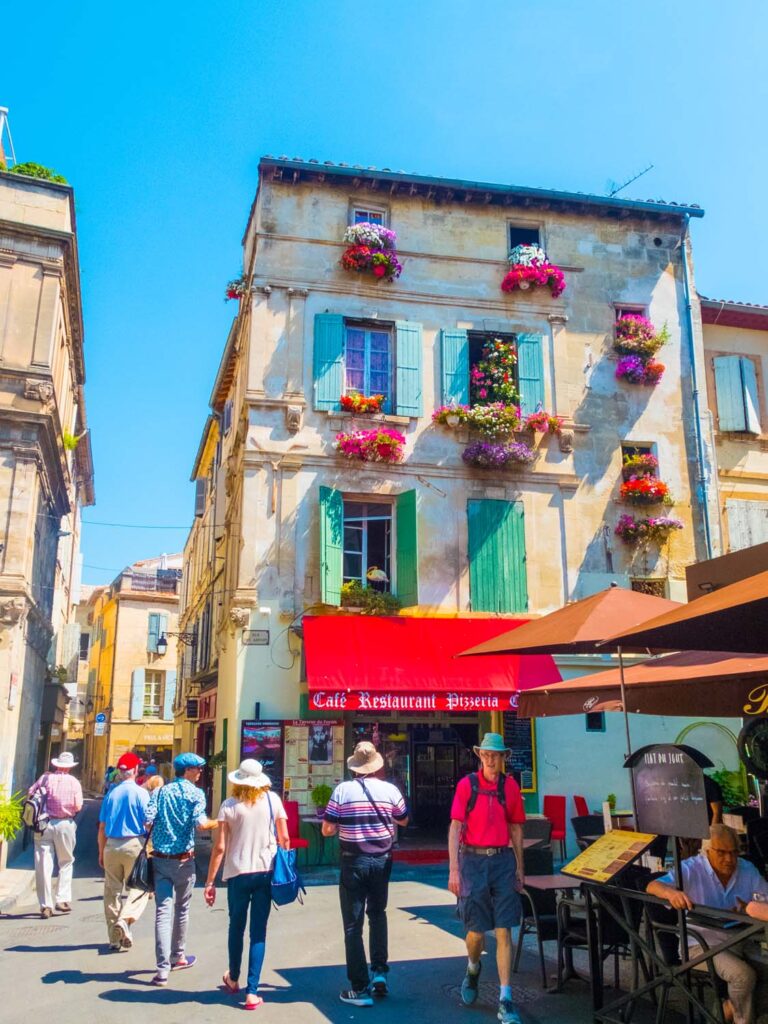
History
Roman Arles
Arles, a large city in the French region of Provence, has a long history that dates back to Roman times. Back then, it was one of the most important cities in the Empire. There are signs of occupations as early as 800 BC. The Romans took over the town in 123 BC and continued to enrich the city with their incredible architecture and infrastructure. Emperor Constantine I built the Roman bathhouses. His son, Constantine II, was born in Arles as the emperor had made it a home away from home. In 408 BC, the new emperor Constantine made Arles the capital city of Rome. Arles became a cultural and religious centre throughout the late Roman Empire.
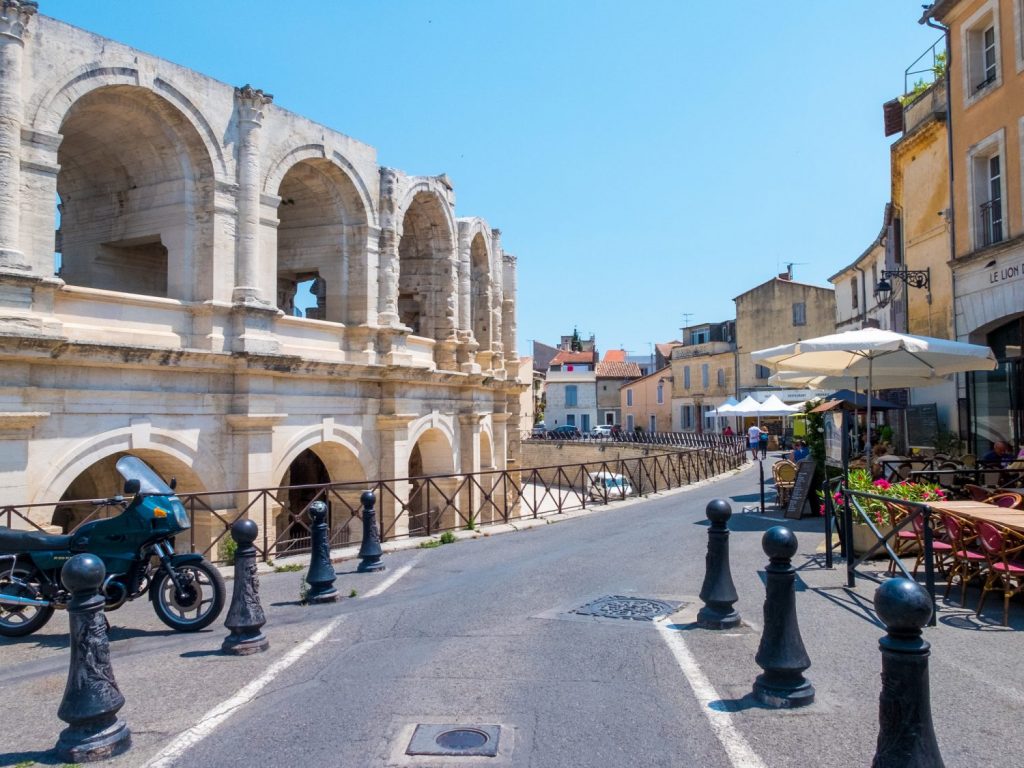
For hundreds of years, the city of Arles continued to hold absolute authority over those in power. Arles joined the countship of Provence in 1239. Due to its proximity to the river, it was a mighty trade city. But in the 19th century, with the advent of the railroad, its significance began to diminish. The town became stagnant, with little to no modern development.
Van Gogh Comes to Arles
But this relic from the past was precisely why Van Gogh was so drawn to the city. The city was full of memories yet peaceful enough to feel like an escape. Everywhere he looked, it seemed as if something was waiting to be discovered.

Sadly, after years of poverty and suffering from various mental illnesses, Van Gogh committed suicide at age 37. But this was not the end of his story. Despite not being appreciated during his lifetime, his impact in the history books is unmatched. And Van Gogh’s stories from Arles put the city back on the map. After years of almost being forgotten, the city suddenly was a hot spot for visitors trying to follow in his footsteps.
Accommodation
If you want to spend a night in Arles, the best place to stay is the little B&B, L’aubergine Rouge. This little hotel is tucked away in the southwest corner of Arles on one of the most darling streets you’ll ever wander down. They have several rooms inspired by the painter where you’ll feel like you’re sleeping inside of his paintings.
Access
Most people arriving in Arles arrive either by car or by train. Arles is just an hour from Marseille, 35 minutes from Nimes, and 40 minutes from Avignon if you rent a car. Often you’ll find if you are travelling from either Nimes, Marseille or Avignon, the train is often an even faster journey than driving! So long as the departure and arrival times align with your plans. The train from Nimes is 30 minutes, Marseille takes 45 minutes, and Avignon is only a 20 minutes journey. Most days, trains arrive and depart about every hour from these cities.
If you are driving into Arles for the day, the best place to park your car is in the Parking Garage near the Post Office. This is just on the outskirts of town, meaning you won’t have to drive through too many narrow streets. Since it’s a little outside the centre, you also won’t have to pay a huge mark up for being in the middle of town. This parking lot is very reasonably priced and right beside the first stop on our tour.
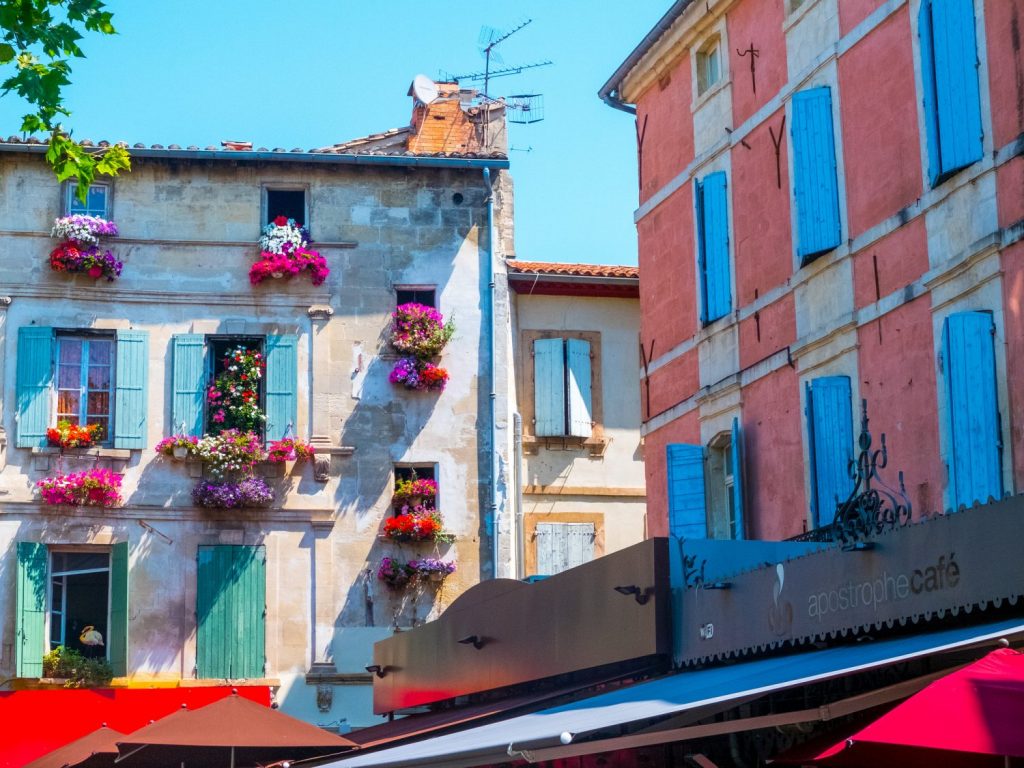
Walking Tour
The Alyscamps
The first stop on the walking tour is the Alyscamps Necropolis. The Alyscamps is one of the oldest Roman ruins in Arles. Roman cities didn’t allow burials inside the city limit for fear of dead infecting the living. Therefore, roads into the city were often lined with tombs and mausoleums. And the Alyscamps was THE place to be buried! People had bodies shipped from all over Europe for the honour of being buried here.
But during the middle ages, when it became more traditional to be buried in a church graveyard, the Alyscamps fell out of fashion. In the Renaissance, old roman sarcophagi were given as gifts to visiting dignitaries. And others were looted by local thieves. All of this contributed to the Alyscamps falling into disrepair, and eventually, it was a forgotten piece of history. The site was wild and overgrown and yet a naturally beautiful environment.
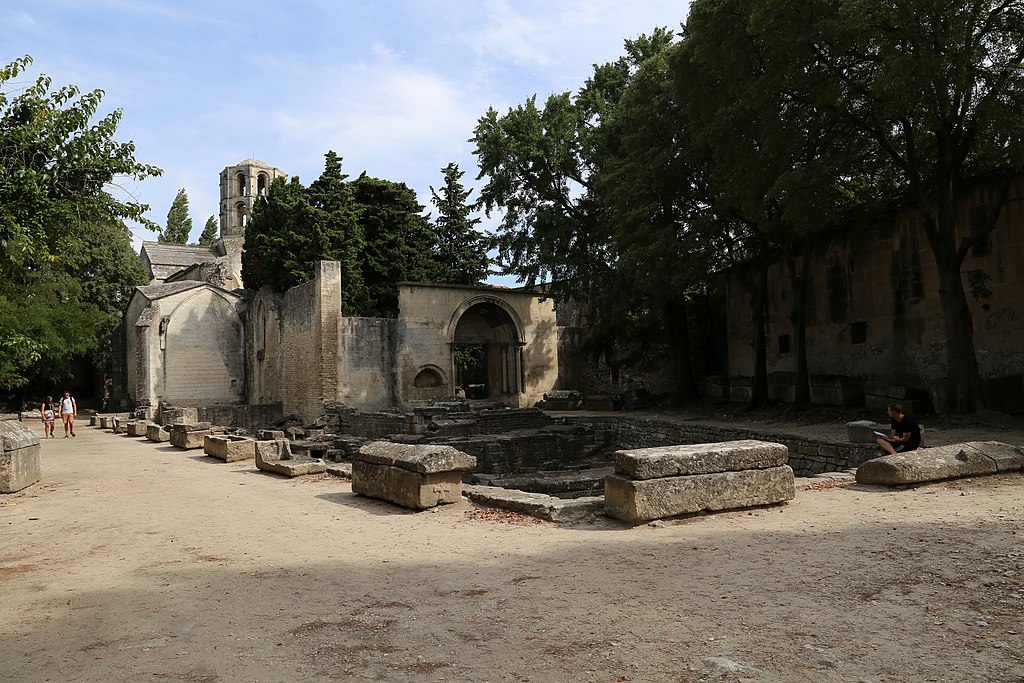
When Van Gogh arrived in Arles, it was still a ruin. He painted four scenes here in 1888, sitting in front of the ancient Roman ruins. Paul Gauguin was staying with Van Gogh during this period. Although their relationship was fraught with hardship, it also inspired the best in both artists. Van Gogh gifted one of his Alyscamps paintings to Gaugin. And even lost past his death, this painting hung in Gaugin’s room for years. Since Van Gogh made it famous once more, the UNESCO World Heritage group has turned it into a heritage site. And restored much of the place to be appreciated by visitors once more.
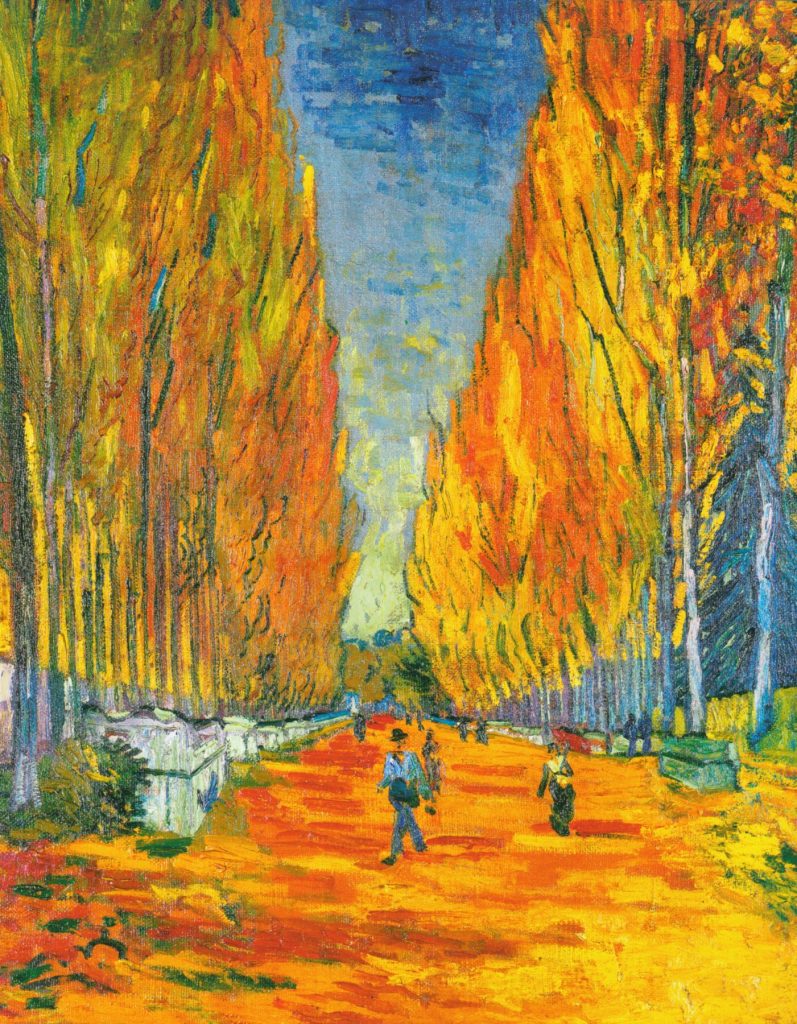
Jardin d’Eté
Walk north along the Avenue des Alyscamps and turn left down Avenue Victor Hugo. On the north side of the street, you will begin to see the bright green grass of the Jardin d’Eté starting to peek through.
The Jardin d’Eté is a relaxing urban park situated against the backdrop of the ancient Roman amphitheatre. There are dozens of fountains and playgrounds, so it’s a great place for kids to have a nice runaround.
For Van Gogh, it was a place he would often come to paint on sunny, summer days. In a letter to his sister, he wrote of the gardens in the park:
I don’t know whether you can understand that one may make a poem by arranging colours…Similarly, the bizarre lines, purposely selected and multiplied, meandering all through the picture may not present a literal image of the garden, but they may present it to our minds as if in a dream.
Van Gogh
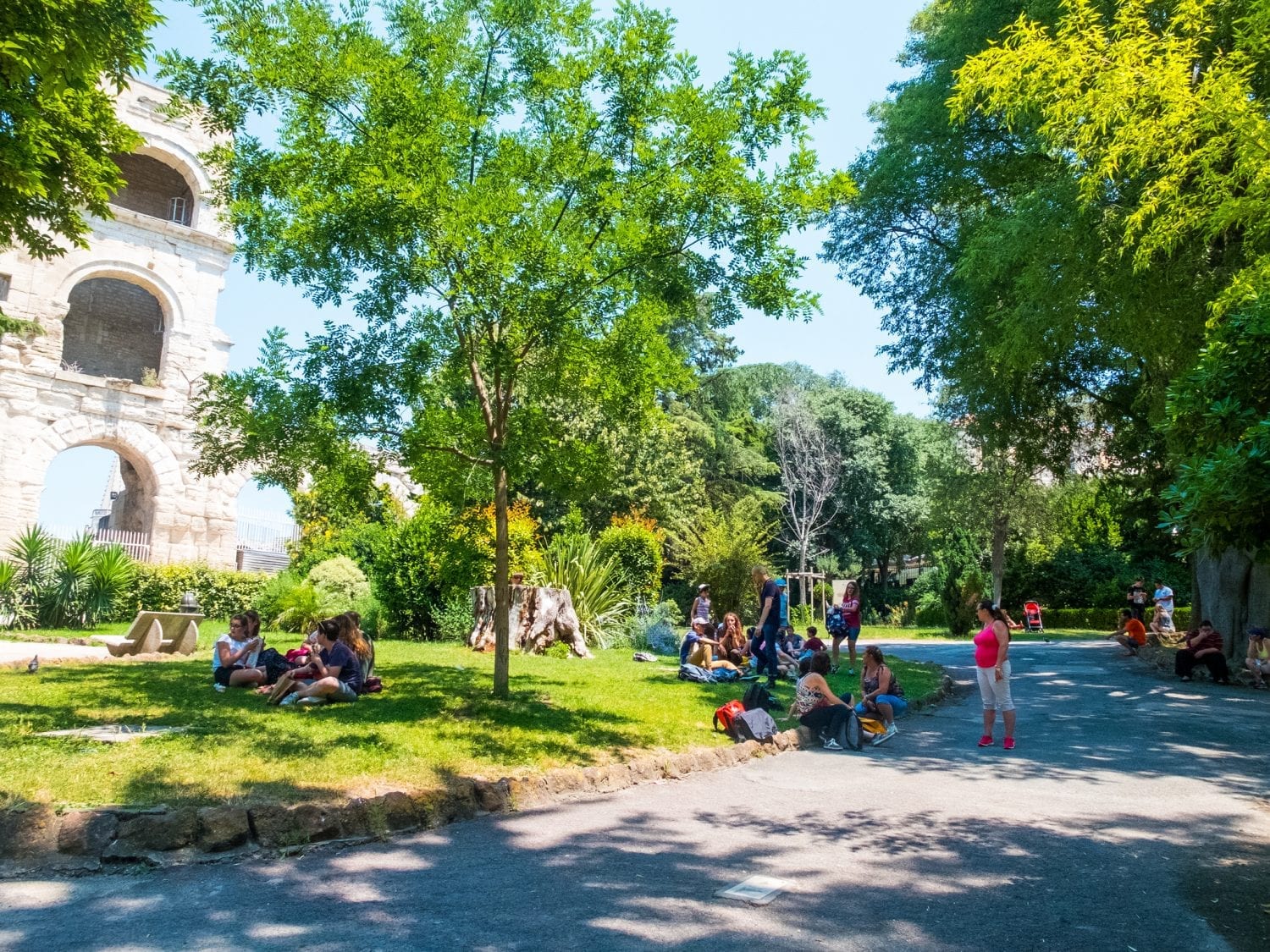
Roman Amphitheatre
Walk north along the pathways in the park until you can exit to the east of the Roman Amphitheatre. You’ll walk out onto Rue Porte de Laure. Continue walking along until you reach the imposing Roman Arena. Built in 90 AD, the amphitheatre was capable of seating over 20,000 spectators. People would come from far and wide to watch chariot races and bloody hand-to-hand battles. Unlike the Colosseum in Rome, this amphitheatre is still used for concerts and festivals to this very day.
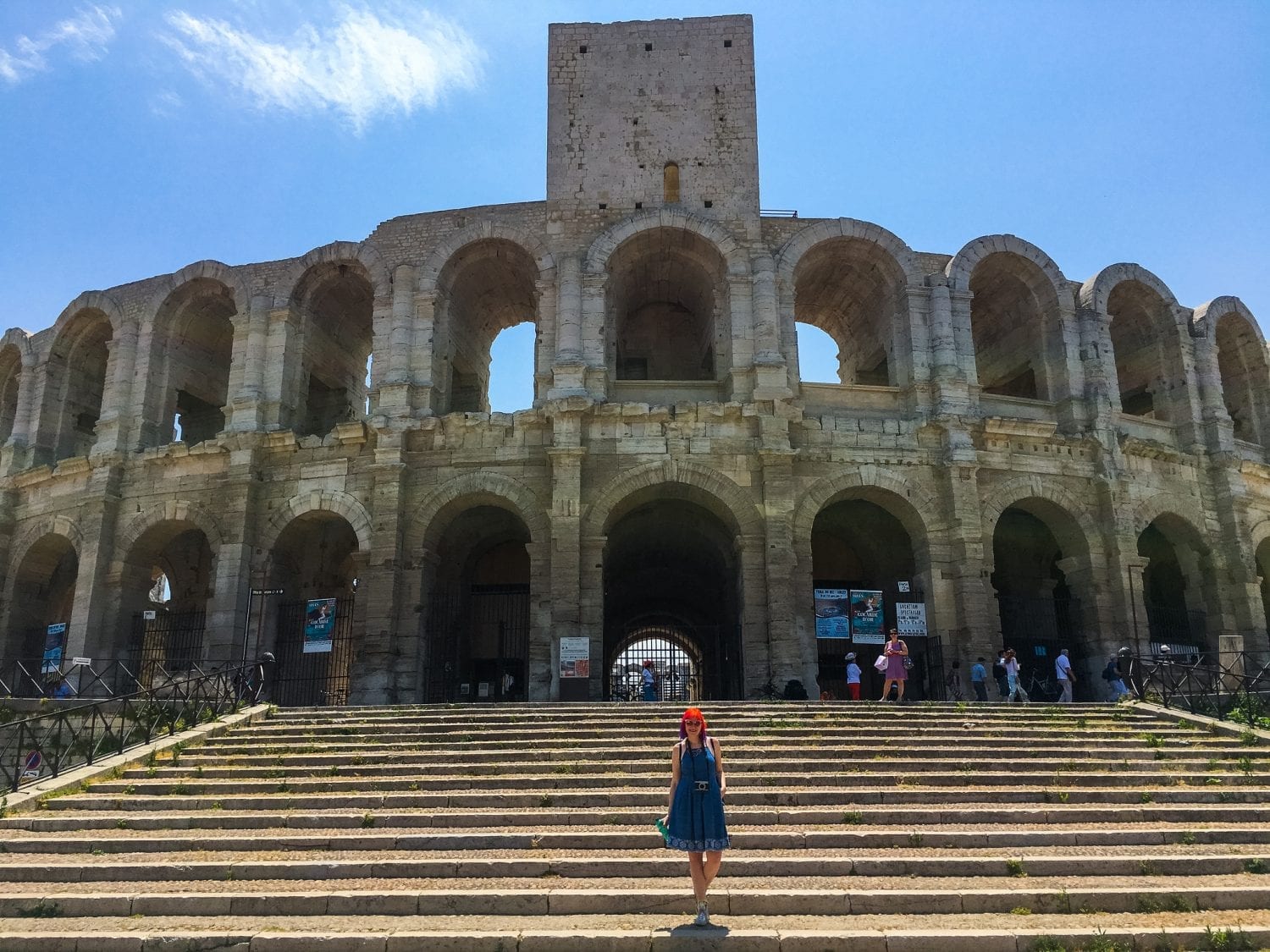
Vincent went to many bullfights in his time in Arles. He wrote to his friend:
Have seen bullfights in the arenas. The crowd was magnificent, great multicoloured crowds. One on top of the other on 2, three tiers, with the effect of sun and shade and the shadow cast by the immense circle.
Van Gogh
Van Gogh painted a scene in 1888 entitled Arena in Arles. The painting is more focused on the spectators than the action or environment. It is a rough and tumble painting. Quick brush strokes and unfinished shapes are obscured in the background. The speed of the painting reflects the voracious atmosphere of the bullfights. A small bull can be seen off in the distance. Spectators are excitedly turning to chat with their neighbours and cheering for their favourite fighters.
This jittery motion used throughout the painting was a technique that Van Gogh perfected under Gauguin’s influence. His paintings of dance halls also had the same, almost unfinished approach. This technique conveyed to the viewer the idea that some spaces were filled with such powerful energy they simply couldn’t be captured in a moment of stillness.
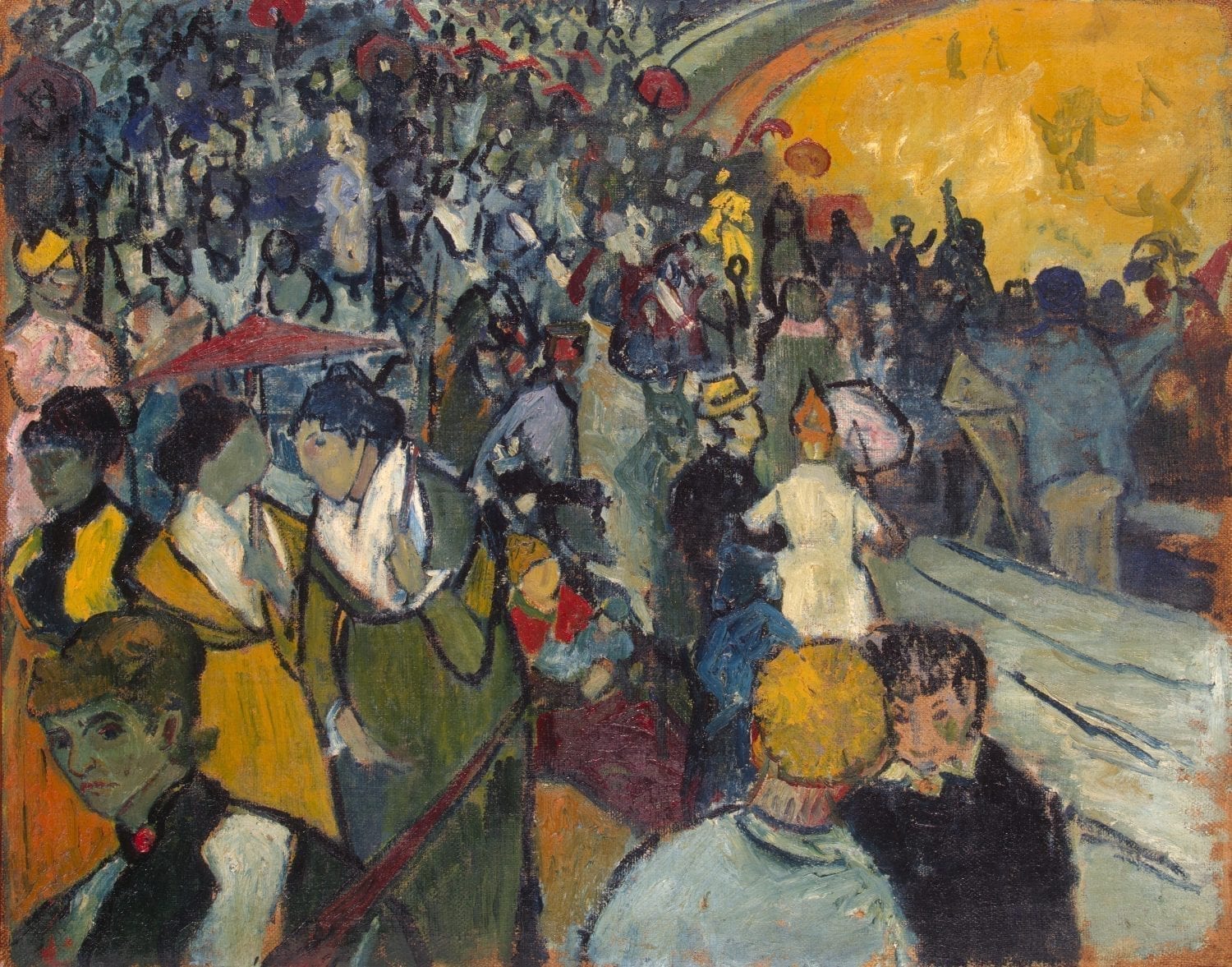
Rue Voltaire
From the arena, walk north along Rue Voltaire. Walking down this street is like taking a step back in time. Dozens of vibrant cafes and restaurants pour out onto the street. Dazzling awnings hang off ancient stone buildings. Pastel shutters brighten up the rainiest day. You will see so many little scenes as you walk, which could have stepped right out from one of Van Gogh’s paintings.
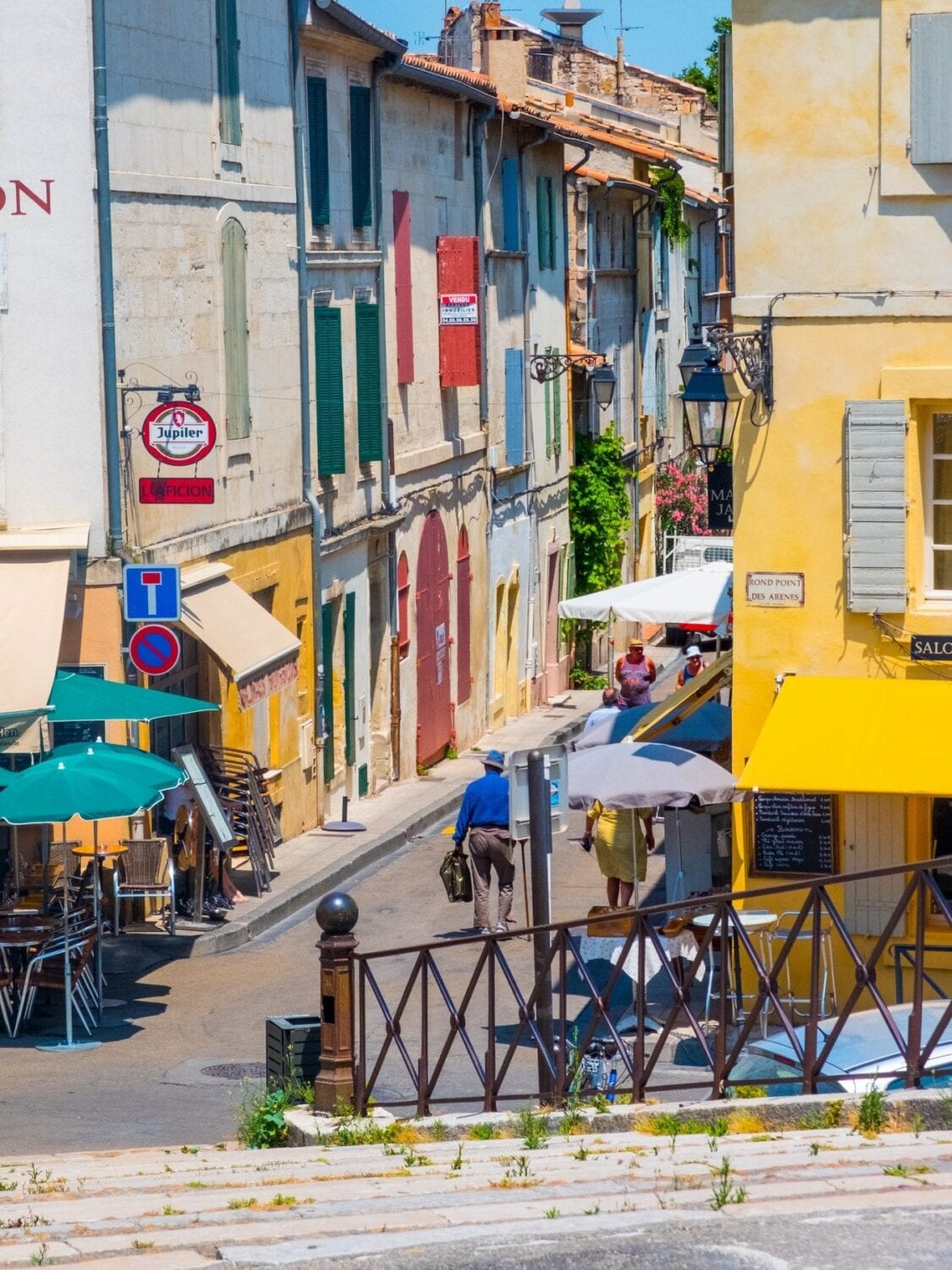
Restaurant Carrel
When you reach Rue Léon Blum, turn left and stop on the corner of Rue Amédée Pichot. When Van Gogh first moved to Arles, he stayed in a room above the Restaurant Carrel, owned by Albert Carrel and his wife. Vincent wrote to his brother Theo when he arrived in Arles:
At times it seems to me that my blood is more or less ready to start circulating again, which wasn’t the case lately in Paris, I really couldn’t stand it anymore.
Van Gogh
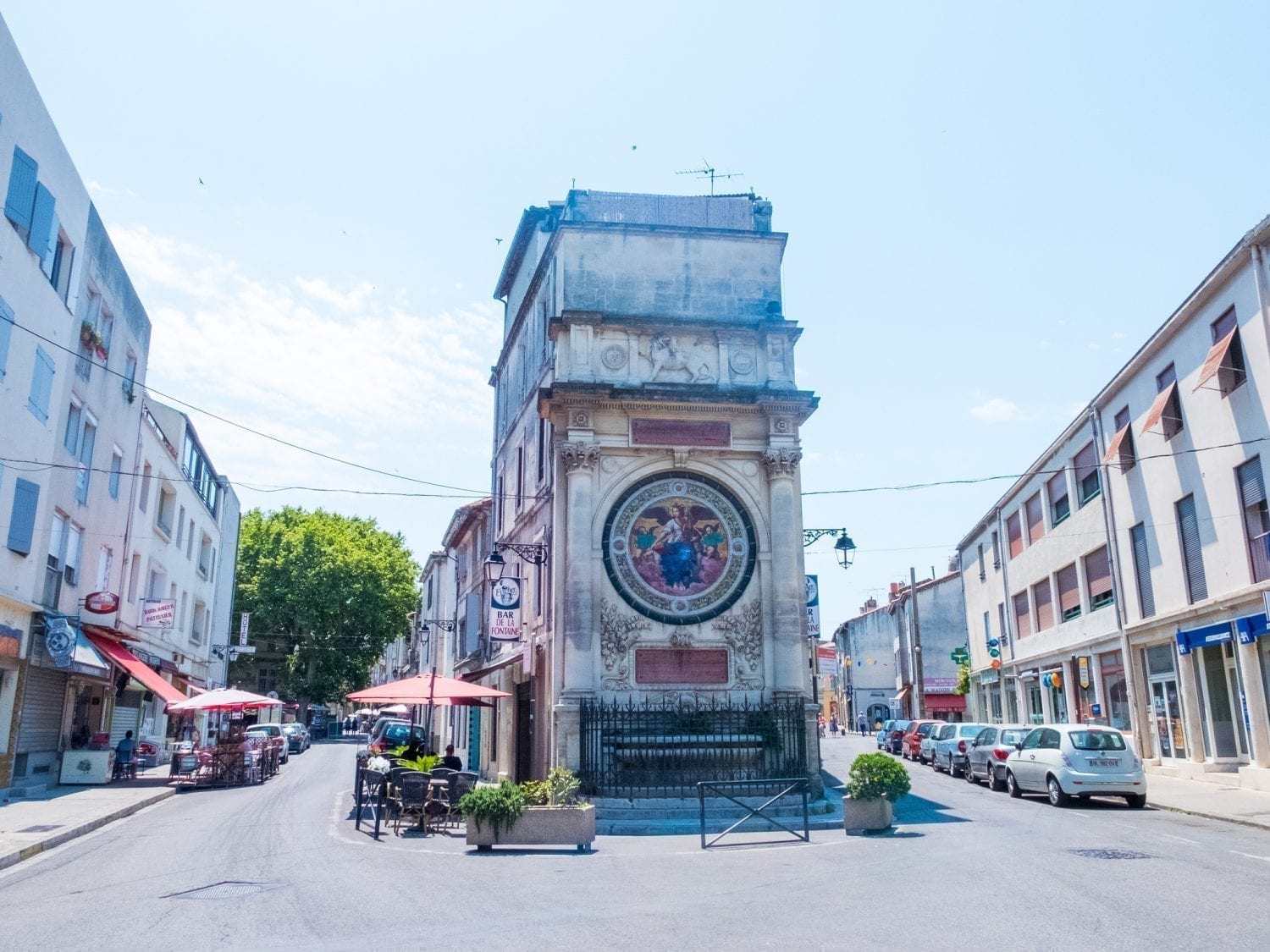
Shortly after arriving in Arles, the lack of creativity he experienced in Paris disappeared. With his creative spark alight once more, he painted View of a Butcher’s Shop. One can imagine that this butcher shop perhaps was painted from the very room he stayed in. Walking up and down this otherwise ubiquitous street gives you a sense of the area Vincent first called home in Arles.
![Vincent van Gogh [Public domain], via Wikimedia Commons](https://thecreativeadventurer.com//wp-content/uploads/2020/01/img_5e18d224e637c-1497x1800.jpg)
But Van Gogh didn’t live on this street for long as he often had mighty disagreements with his landlord. While he might not have loved his landlord, he did love the neighbourhood. It wouldn’t be long until Van Gogh would soon move into his iconic Yellow House, which was just up the street.
As you near the end of the Street, Rue Voltaire turns into Rue de less Cavalerie. You will pass through the two giant aged guard towers. These towers are surrounded on either side by the ancient city walls.
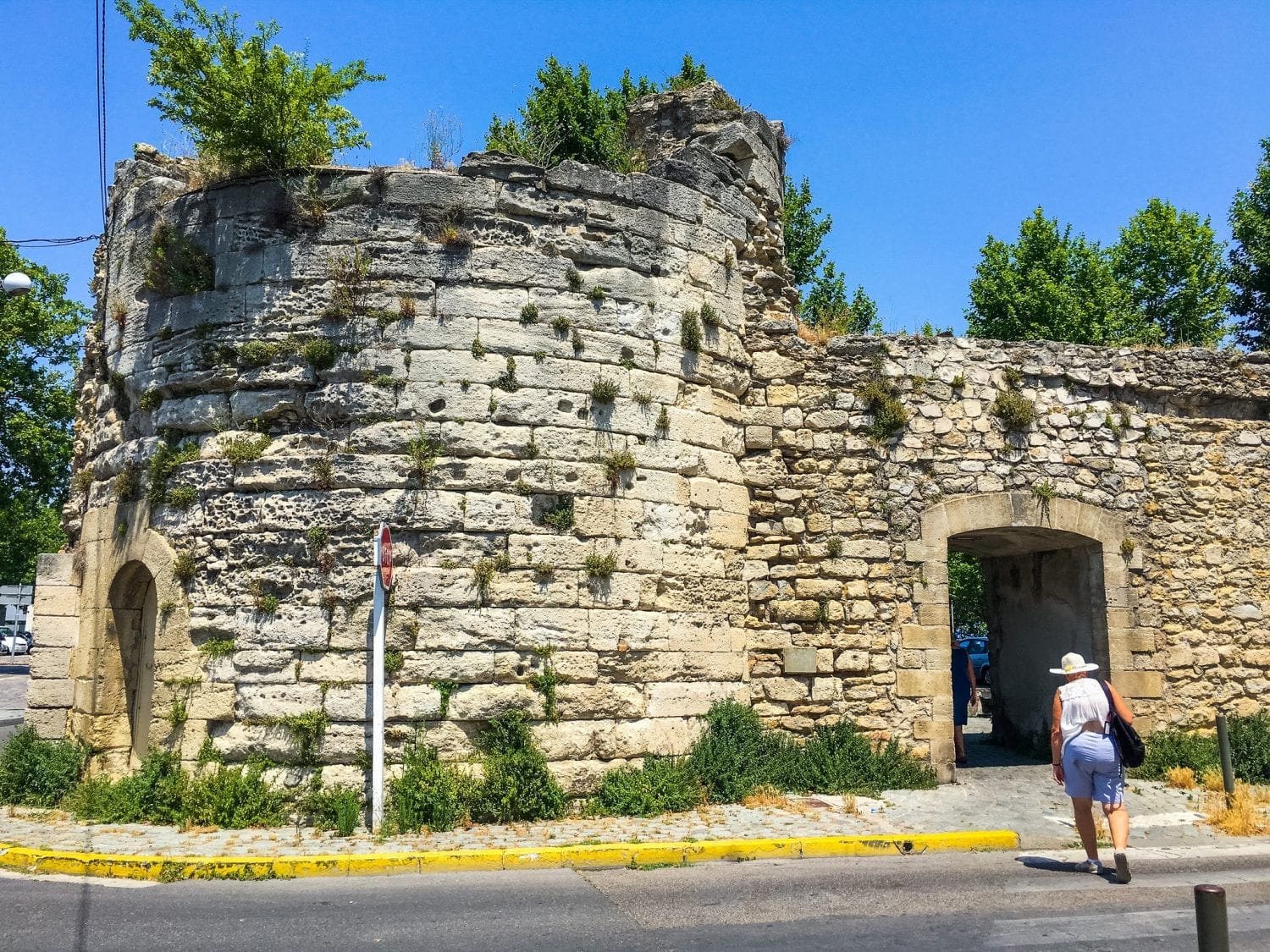
Yellow House
Across the roundabout, at the corner of Rue Georges Tinarage and Avenue de Stalingrad, is a simple restaurant. But this was once where you would have found Van Gogh’s beloved home. The same one featured in his painting The Yellow House.
The original house had four rooms and a small studio. Vincent painted the entire building bright, sunflower yellow. In the painting, you can see a train rushing by in the distance. These trains were Vincent’s way into the countryside, his beloved muse. More than any woman. He loved the city, but the wild sunflower fields, blossoming fruit trees, charming peasants and golden wheat fields were where his brush came alive.
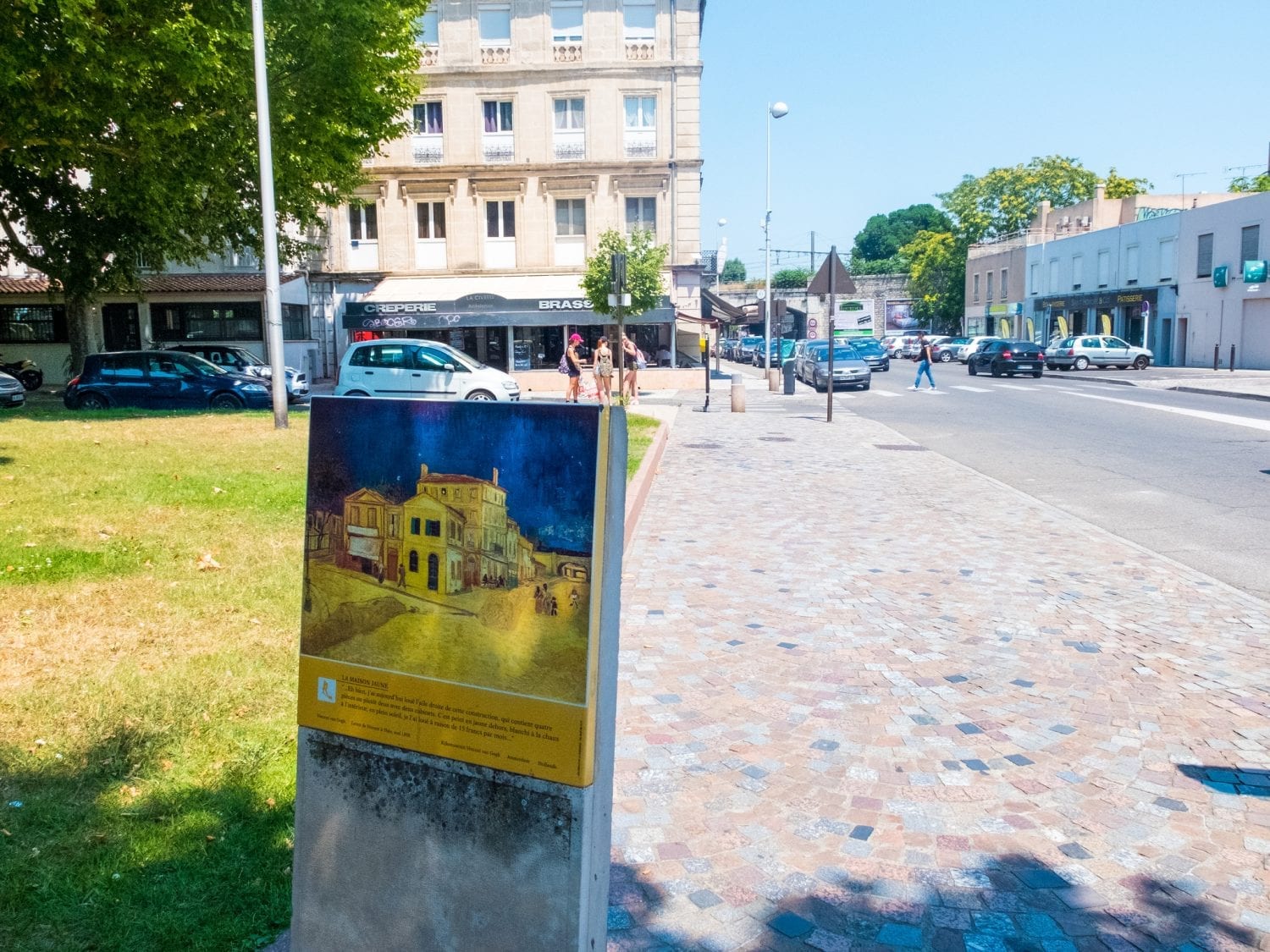
Nuit étoilée sure le Rhône
Turning left, make your way towards the Rhone River. Here you’ll find the scene from painting Nuit étoilée sure le Rhône. Don’t get this mixed up with Starry Night, although they are both very similar and show Van Gogh’s obsession with capturing night effects. In a letter he wrote to his brother Theo, he said:
Often it seems to me the night is even more richly coloured than the day.
Van Gogh
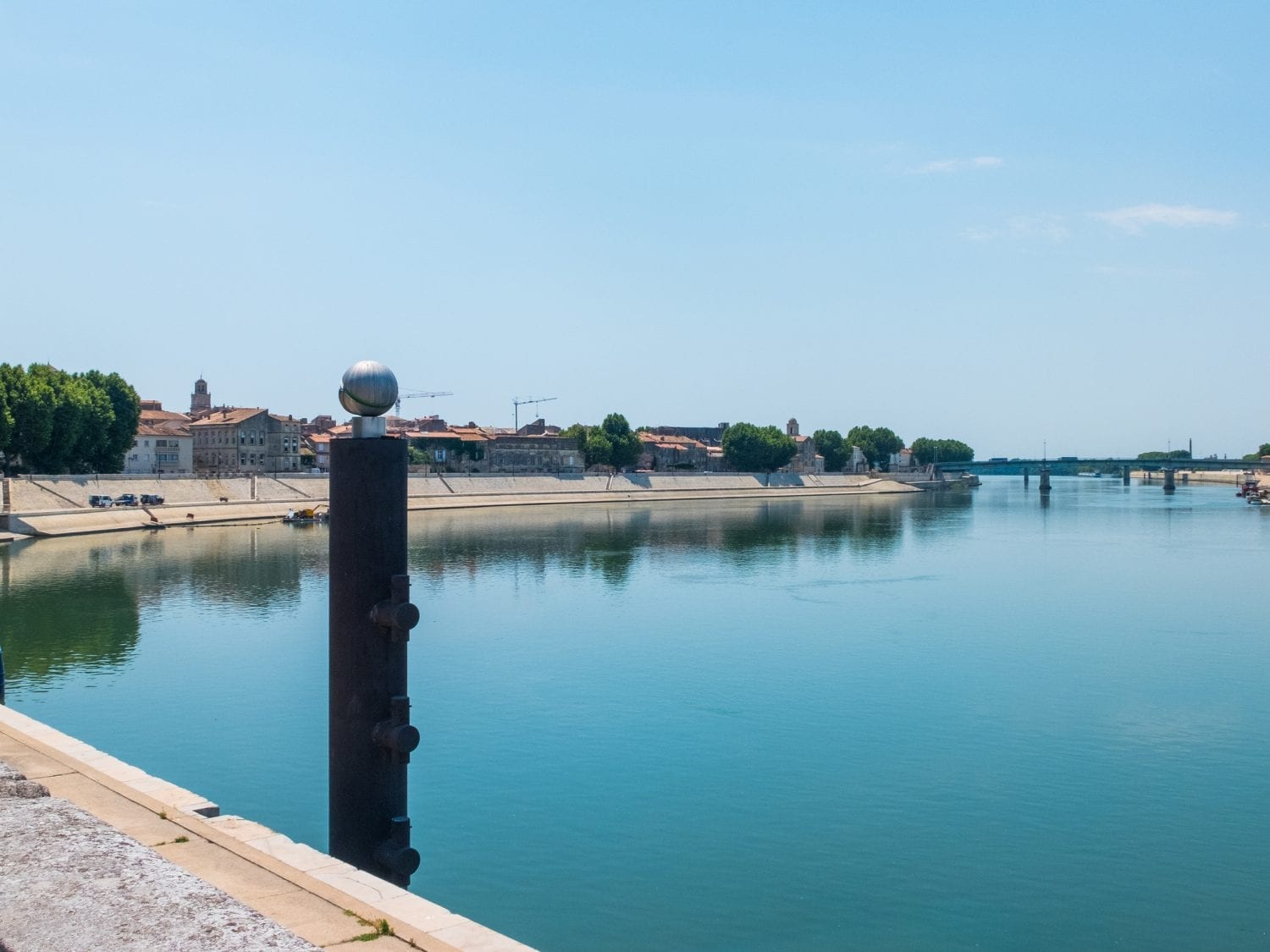
Nuit étoilée sure le Rhône is an explosion of blue; Prussian blue, ultramarine and cobalt. Each one of these colours are contrasted with intense orange and yellow. The firery colours representing the gas lights reflecting in the water. A man and his wife walk along the shore away three boats, bobbing in the water. Whereas Starry Night is a dreamlike fury of brush strokes, Nuit étoilée sure le Rhône is a much calmer scene. The brush strokes are evenly spaced, and even the lights on the water are still. Not a single ripple seems to disturb them.
![Vincent van Gogh [Public domain], via Wikimedia Commons](https://thecreativeadventurer.com//wp-content/uploads/2020/01/img_5e18d2387920d-1500x1163.jpg)
Musée Réattu
Continue walking down the water’s edge. The fantastic pedestrian promenade is ideal for taking in all the sights along the river. After about five minutes, you’ll reach the Musée Réattu. When Van Gogh lived in Arles the museum was a place he hated. He is quoted as saying:
The women are beautiful here, it’s no joke — on the other hand, the Arles museum is dreadful and a joke.
Van Gogh
Van Gogh was very judgmental of other artists. Perhaps out of jealousy of those who seemed to manage to make the kind of living, he would never. During his lifetime, he only sold one painting. He couldn’t understand how people could see the greatest in these artists and not himself.
Vincent van Gogh Foundation Arles
As a cosmic coincidence, the Vincent van Gogh Foundation in Arles is located only a few minutes south of the Musée Réattu. In 1983, Yolande Clergue founded the Association for the Creation of the Foundation Van Gogh. He was a long-time resident of Arles and believed there should be an institute to study and educate people on Van Gogh’s influence on modern artists in Provence. In 2010, the city of Arles gave the historic Hôtel Léautaud de Donines to the institute. It was renovated to become an educational space.
The museum features a large collection of Van Gogh’s letters and perhaps one or two original Van Gogh paintings. Don’t come here expecting to see those famous works of art. The museum is meant to highlight modern artists influenced by Van Gogh and the city of Arles.
Place du Forum
Walking along Rue du Dr Fanton and turning down Rue de la Place, you will come up the Place du Forum. The Place du Forum was once the historic city centre during the Roman ages. You can still see one of the ancient columns embedded into the side of the Nord-Pinus Grand Hotel.
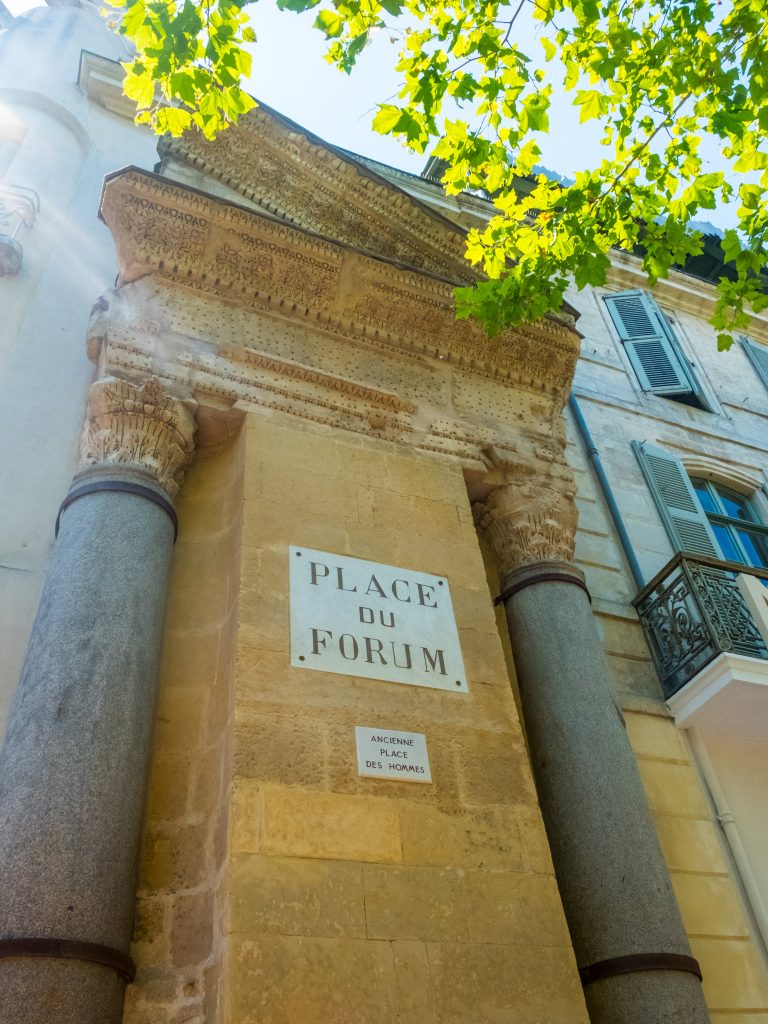
Vincent’s fixation on the appearance of the world at night continues and is highlighted in Café Terrace at Night. He said in a letter:
In the past, they used to draw, and paint the picture from the drawing in the daytime. But I find that it suits me to paint the thing straight away. It’s quite true that I may take a blue for green in the dark, a blue lilac with a pink lilac since you can’t make out the nature of the tone. But it’s the only way of getting away from the conventional black night with a poor, pallid and whitish light, while in fact, a mere candle by itself gives us the richest yellows and oranges.
Van Gogh
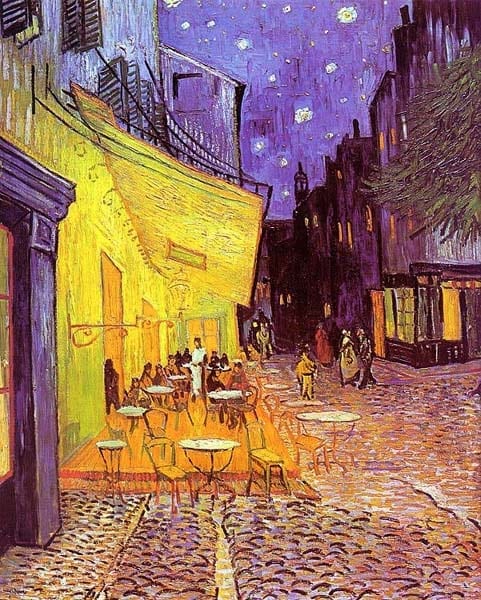
Le Café Van Gogh
Despite Vincent’s lack of popularity in his lifetime, Van Gogh is big business these days. Le Café Van Gogh is a recreation of the original cafe from the painting. Although it’s not the authentic spots from the painting, it has been done up to look as much like the real thing as possible. While the square is pretty busy and expensive, it is also a stunning place to sit with a coffee and enjoy the scenery.
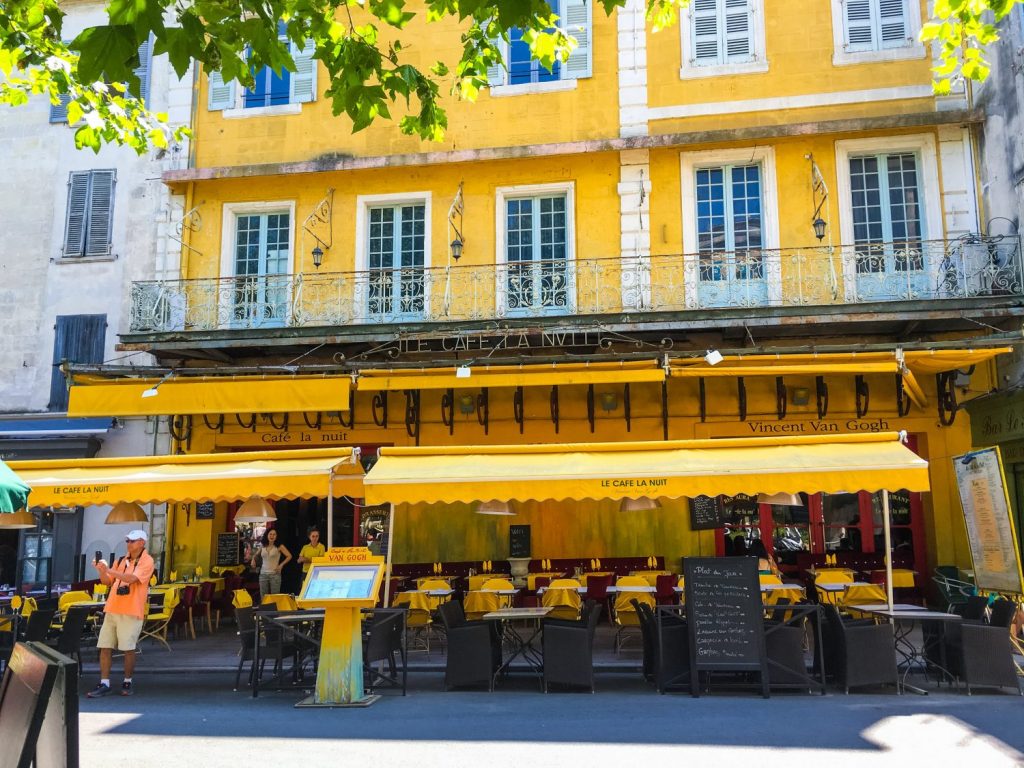
Old Arles Hospital
Walk south from the forum until you reach the Old Arles Hospital. One evening, after Gauguin had made it clear to Vincent that he had made plans to leave, Van Gogh returned home alone. Suffering from hearing voices, especially when left alone, Van Gogh was tormented. In a fit of madness, he cut off his ear. Perhaps as a means to cut out the noise of the voices. Van Gogh bandaged the wound and wrapped the ear in the paper. He delivered it to a cleaning woman who worked at a local brothel that Gaugin and Van Gogh frequented together.
Van Gogh was found unconscious by a policeman and taken directly to the Old Arles Hospital the following day. Félix Rey, a young doctor still in training, treated him inside his hospital. Van Gogh was diagnosed with “acute mania with generalized delirium during his time in hospital.” Vincent would go from being semi-lucid to suffering from hallucinations and delusions. His brother Theo came to visit him in hospital despite getting engaged the day previous. Nothing would keep Theo from being by Vincent’s side.
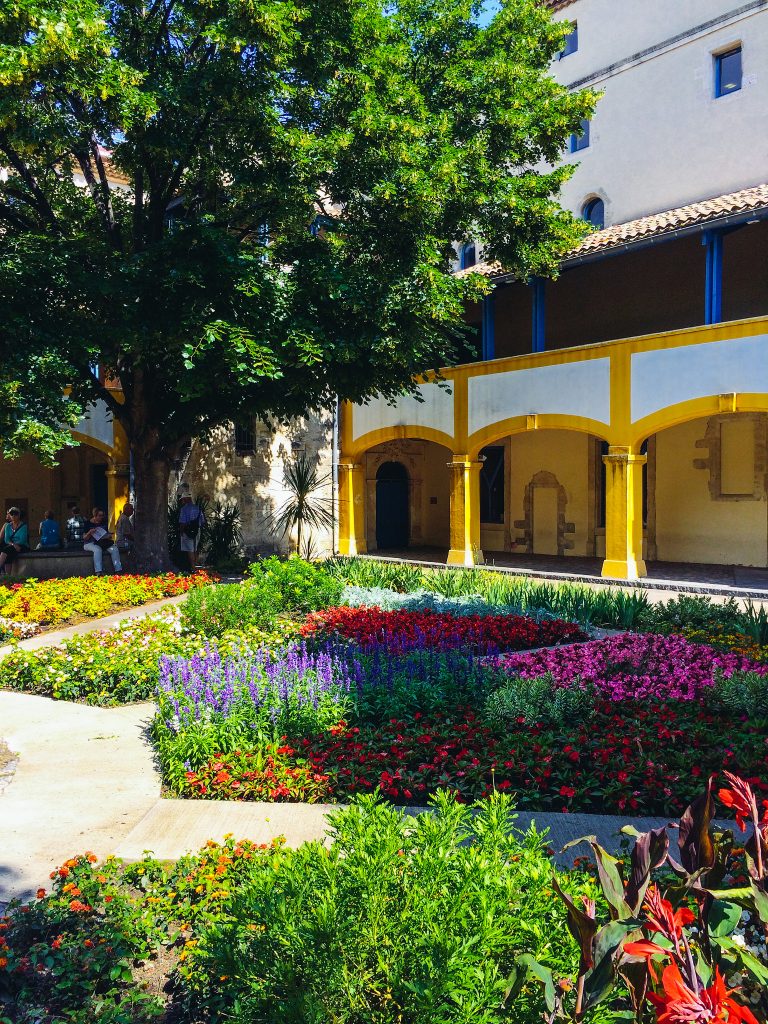
Hospital in Arles
Dr. Rey felt sorry for Vincent. He would allow Vincent into the courtyard to paint on his more lucid days. And paint he did. Even today, this courtyard manages to bring a sense of peace to even the most scattered mind. The golden walls seem to glow in the sunlight. The garden is full of lustrous flowers which burst open in the afternoon. Van Gogh’s painting, Hospital in Arles, depicted the courtyard in 1888. Looking at it today, you can barely see the passage of time between the two.
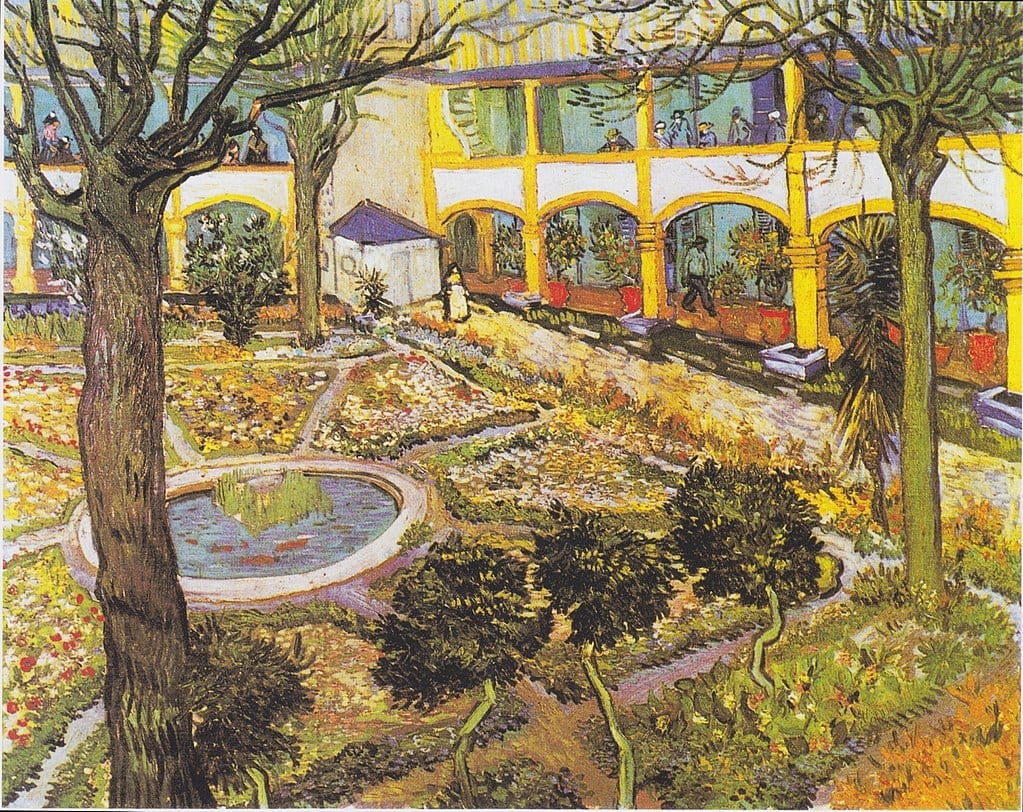
Ward in the Hospital in Arles
He also created two other paintings during his stay in the hospital. One was a gift to Dr. Félix Rey. It was a portrait of the beloved doctor who showed Vincent genuine kindness. The second painting is entitled Ward in the Hospital in Arles. The scene is quiet and simple. But Vincent’s slight distortions represent the isolation and confinement while living here.
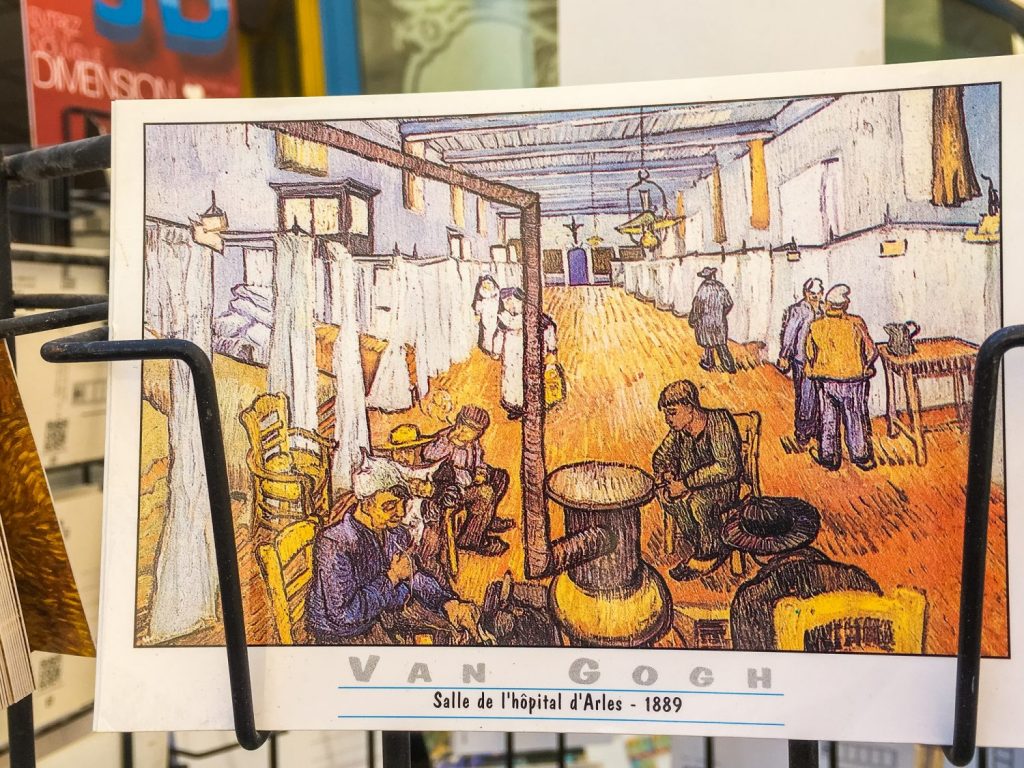
Starry Night
In 1889, Van Gogh was committed to the Saint-Paul de Mausole asylum in Saint-Rémy de Provence. From there managed to channel his pain into one of the most impactful paintings, Starry Night. This painting is all about dreams versus reality. The natural versus the divine. It brings us into the beautiful madness inside Van Gogh’s mind. In his mind, he lived in the stars, beloved and looked up to by everyone on earth. The swirling, fluid paint in the sky contrasts the rigid city landscape below. Like a window into the heavens, a wonderful dream, unlike our structured reality.
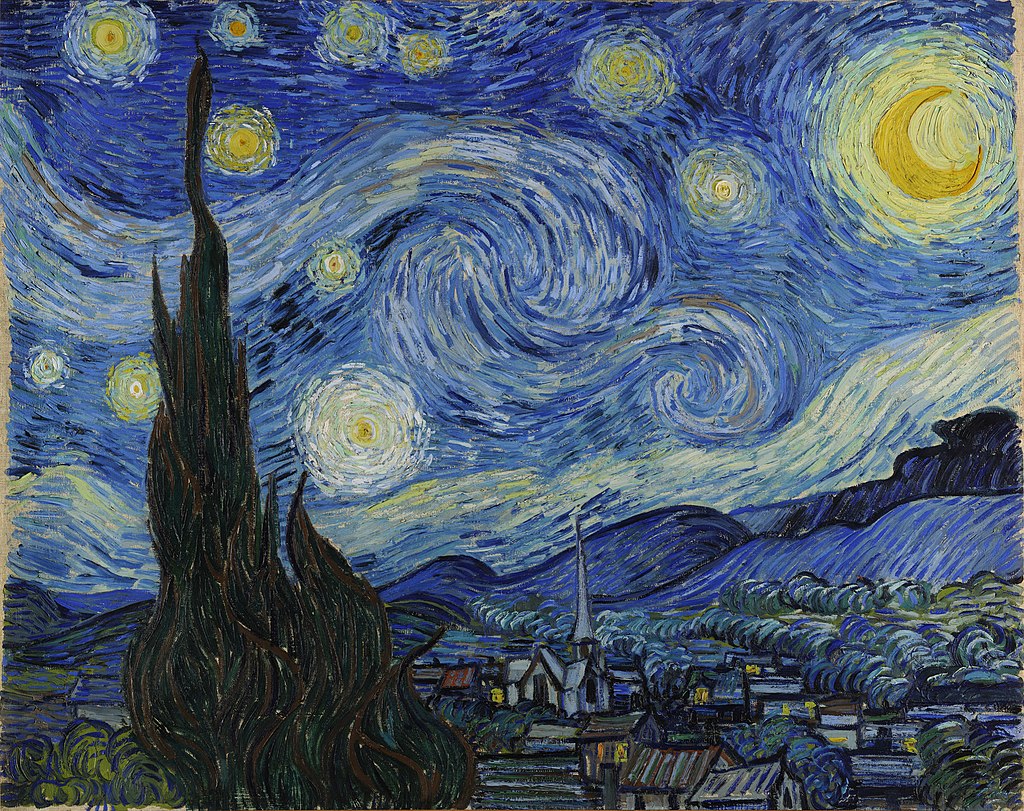
The Bridge of Trinquetaille
Walking back towards the river, walk up the water’s edge. Here you can see the scene from the painting of The Bridge of Trinquetaille. Van Gogh was in love with bridges. They are frequently featured in his works. In a letter to his brother, he wrote:
I have a View of the Rhône — the Trinquetaille iron bridge, where the sky and the river are the colour of absinthe — the quays a lilac tone, the people leaning on the parapet almost black, the iron bridge an intense blue — with a bright orange note in the blue background and an intense Veronese green note. One more effort that’s far from finished — but one at least where I’m attempting something more heartbroken and therefore more heartbreaking.
Van Gogh
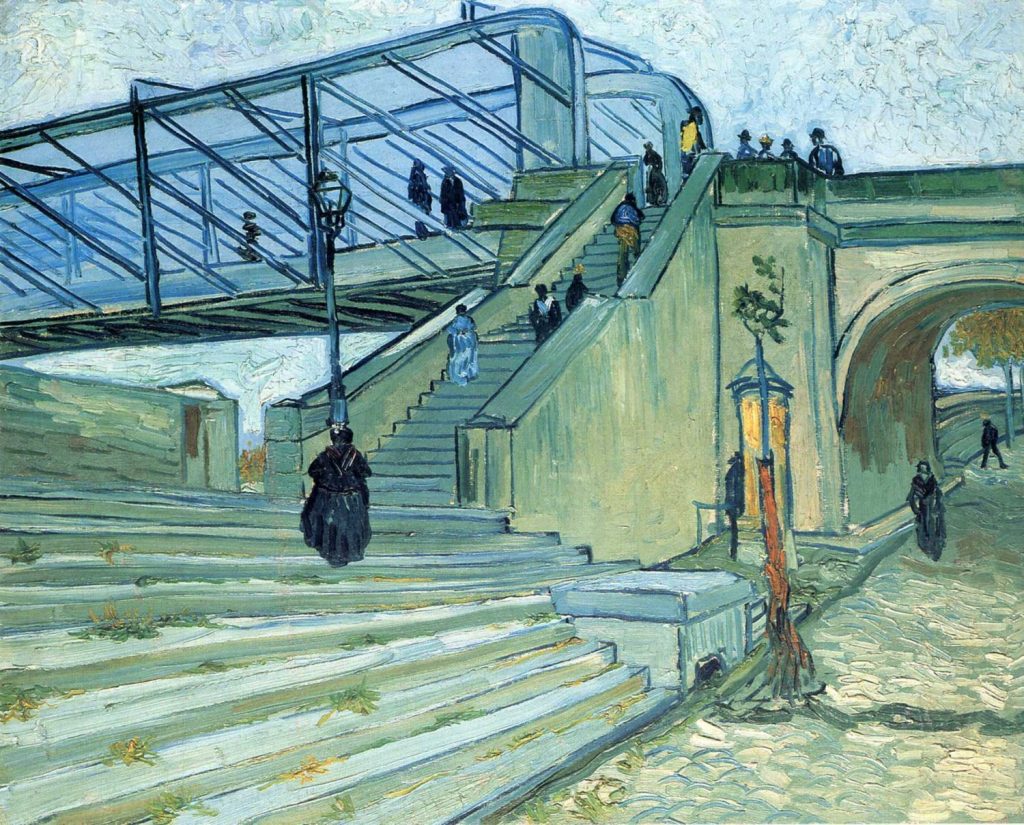
Walk out to the centre of the Pont de Trinquetaille, where you’ll have a beautiful view across the Rhone River. Looking out, see if you can spot all those magnificent colours Van Gogh spoke about in his letter. Van Gogh is an artist whose use of colour is unparalleled. He saw the world in a way that many of us simply miss. Take this time to yourself. Put away your phone or camera for the moment and simply look over the horizon.
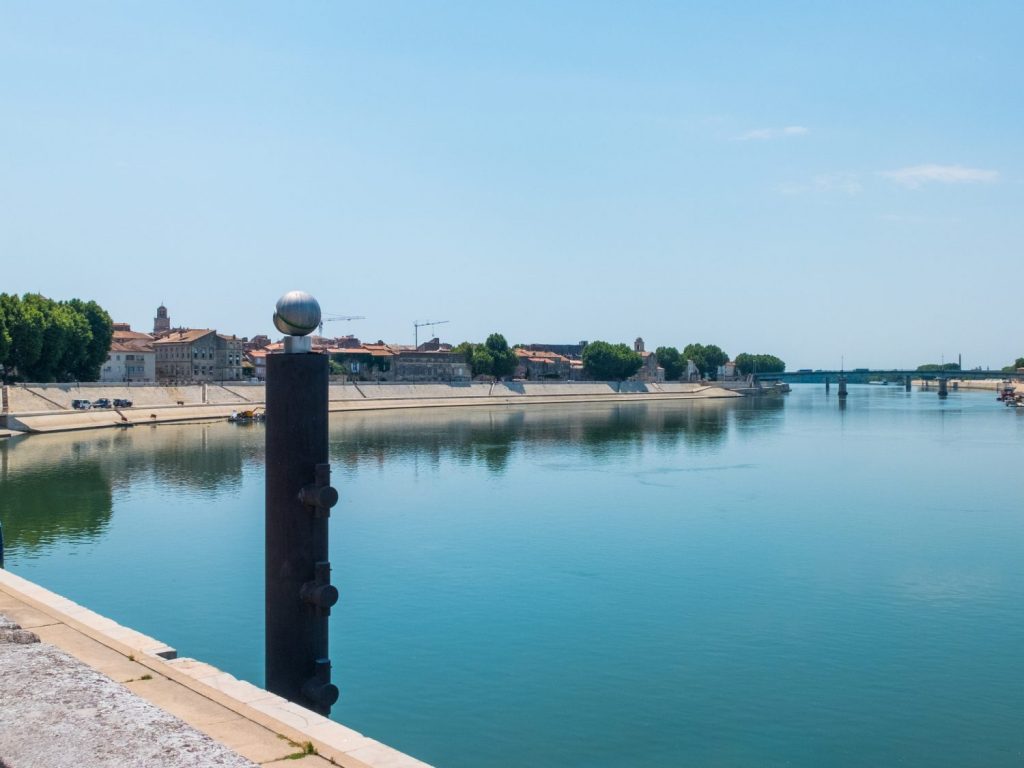
While Van Gogh’s depression was something he couldn’t overcome, there is no doubt that, at least for a time, Arles gave him a momentary respite from the overwhelming sadness he felt in his soul. And no matter who you are, I hope that visiting Arles brings you the same sense of peace Van Gogh felt when he was here. You may even see a little bit of that magic Van Gogh etched into history. And bring a little bit of that magic home with you too!
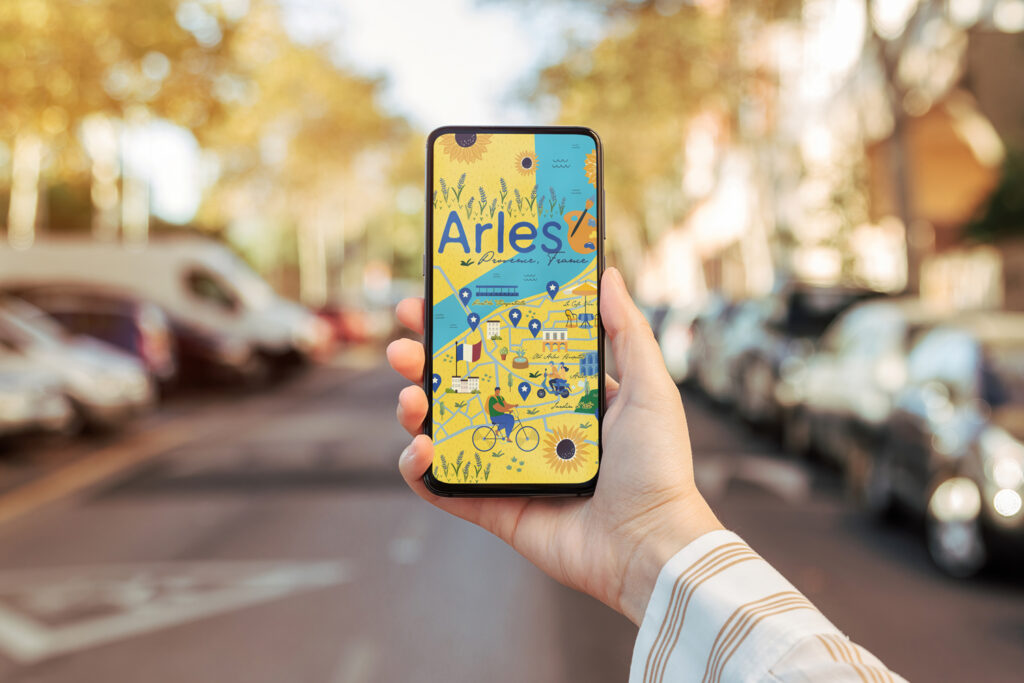
Get the Downloadable PDF of the Van Gogh Arles Walking Tour!
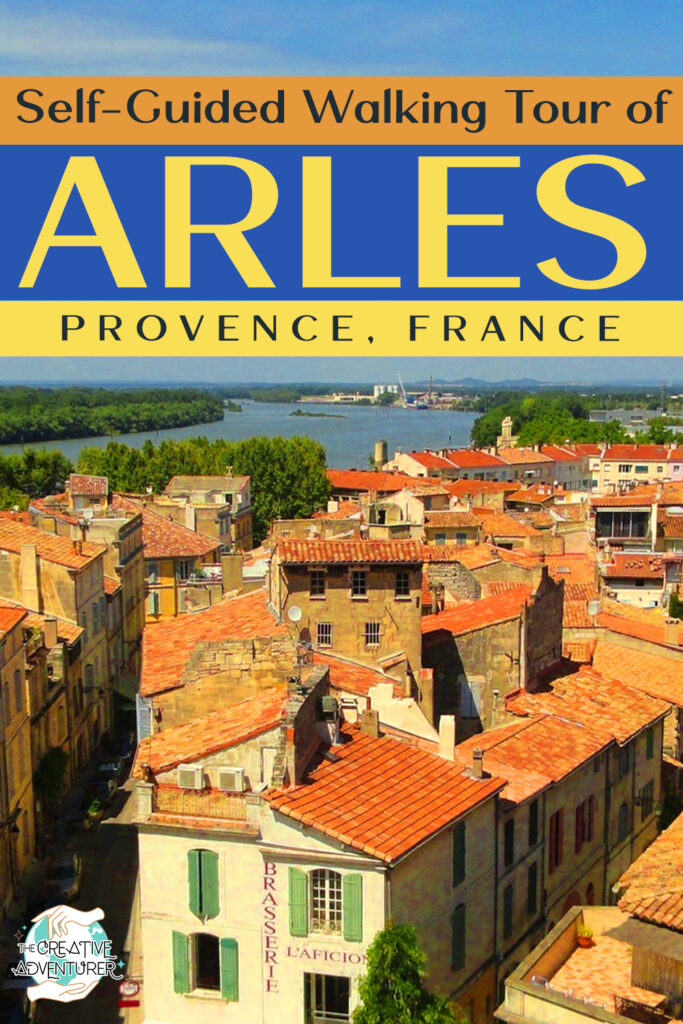



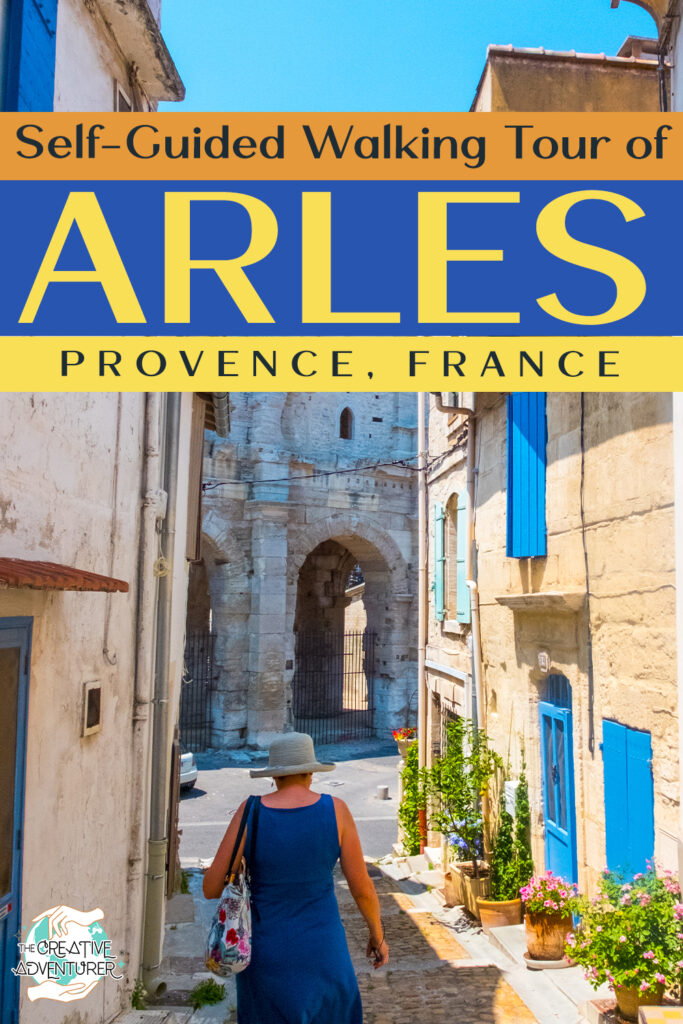
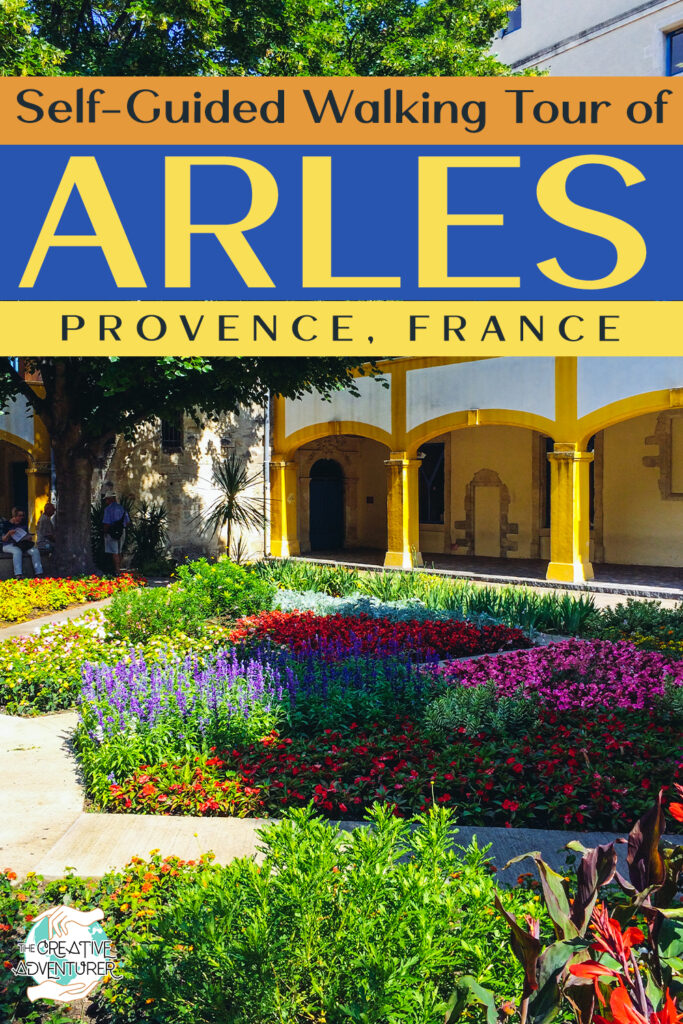
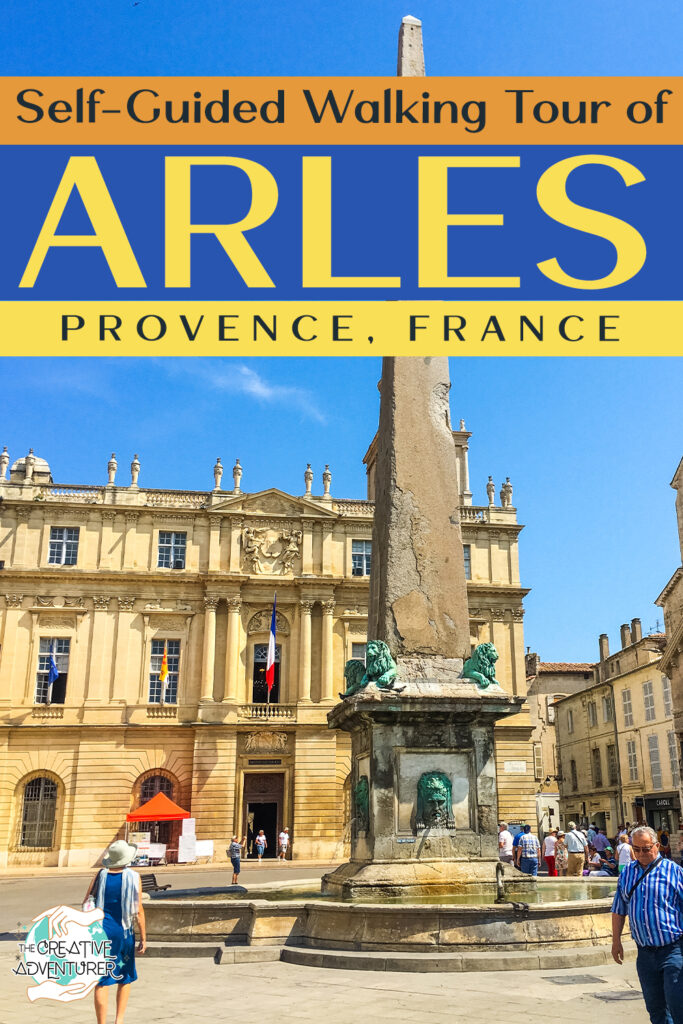



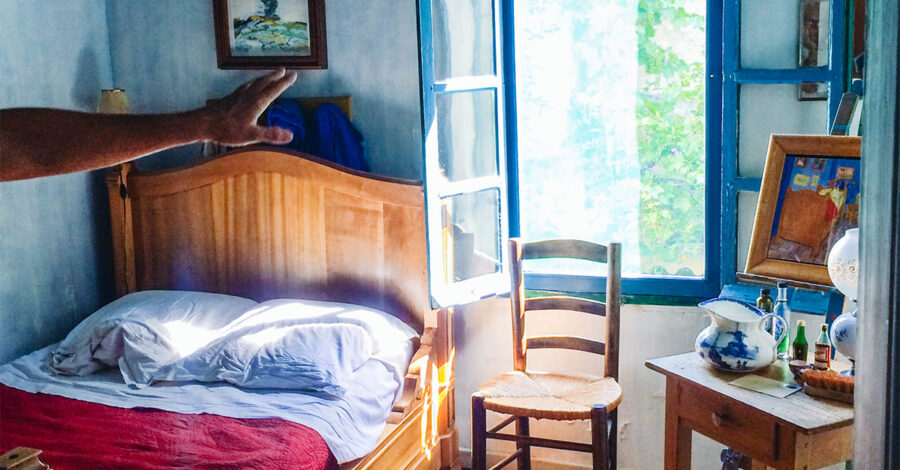

 (@vangoghstudio_amsterdam)
(@vangoghstudio_amsterdam)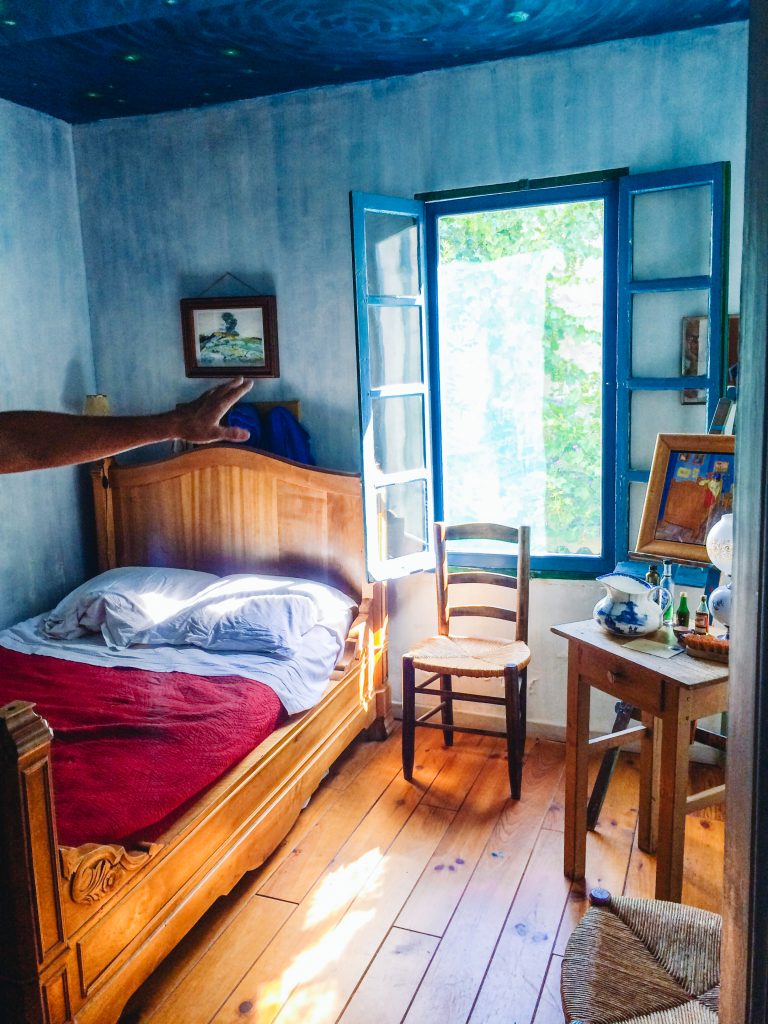
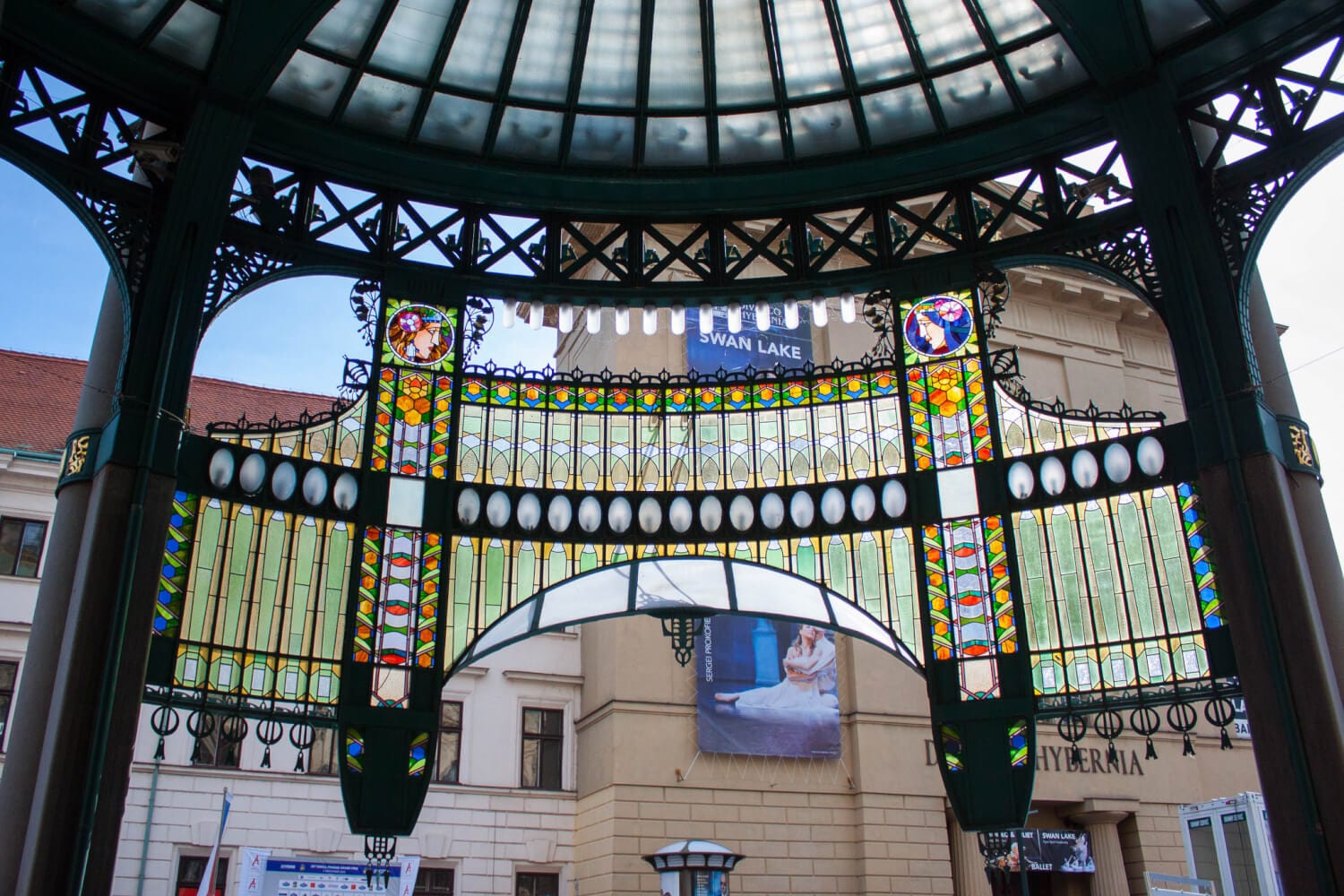


21 COMMENTS
mmjager@aol.com
6 years agoHi Laura, I liked your article on Arles a lot! There’s one little thing that needs fixing though; van Gogh was born in Zundert which is in the Netherlands, not Belgium, and which is the reason why he is Dutch. People who are born in the Netherlands are Dutch
laura.f.whelan@gmail.com
6 years agoWow, nice catch! Totally a mixup for me there. Thanks Michelle Glad you enjoyed the article.
Glad you enjoyed the article.
andreapaty255@gmail.com
6 years agoHey!! Really loved your article I am a big fan of Van Goght and really look forward to visit Arle’s on April 2019 to do this lovely tour myself. I kindly wanted to ask you , in your opinion, how many days this tour in Arle’s should last to properly enjoy the experience. Many thanks again for your article.
I am a big fan of Van Goght and really look forward to visit Arle’s on April 2019 to do this lovely tour myself. I kindly wanted to ask you , in your opinion, how many days this tour in Arle’s should last to properly enjoy the experience. Many thanks again for your article.
laura.f.whelan@gmail.com
6 years agoHi Andrea! Glad to hear you’re such a fan! April will be such a beautiful time to visit, all those awesome spring flowers in bloom. I think 2 full days should be more than enough. I think most people could do it in one long day but if you’re a big fan you’d wanna take your time and not rush through it. Plus it gives you can option if one of the days are rained out. If you’re a big Van Gogh fan, I’d suggest staying at Laubergine Rouge. They have a Van Gough themed room which you’ll love!
jeanrowe@mac.com
6 years agoLaura- Did you do the walking tour on your own? Or did you hire a company? If so, would you mind sharing their name? We will be visiting Arles next fall and I’ll love to schedule a walking tour like you described.
Thanks!
laura.f.whelan@gmail.com
6 years agoHi Jean!
We did the walking tour all on our own! Just followed pretty much what I’ve laid out here. It’s such a wonderful city to explore on foot! Don’t be afraid to poke your head around hidden corners, you’ll never know what surprising secrets you’ll discover!
yggdrasil12000@yahoo.com
6 years agoLaura – Great article and very informative. I am going there shortly and you have given an excellent idea of what’s there.
laura.f.whelan@gmail.com
6 years agoThanks Keith! Arles is such a great city to explore on foot, you’ll have a great time following this as well as discovering new things for yourself! Let me know what you loved most!
Francesca M
6 years agoI feel like I traveled there myself through this blog post. Thank you.
laura.f.whelan@gmail.com
6 years agoThanks, Francesca! Hope you have an amazing time, it really is such a unique and beautiful place!
ArtGirl2@cox.net
5 years agoMy husband & I are planning a cruise that stops for the day in Marseille. We would like to take the walking tour of Arles as you’ve described (it sounds outstanding!). Generally, how long is the tour if you enjoy it at a comfortable pace? Is the weather pleasant in early September? (ArtGirl2@cox.net)
laura.f.whelan@gmail.com
5 years agoHi Linda! So excited to hear about your trip plans, Septemeber is a great time to visit as it’s when the high summer heat starts to reduce but it’s still going to be nice and warm. I would give yourself at least 4-5 hours to soak it all in. The town is pretty small but it’s just nice to go at a leisurely pace to really study the intricacies of the environment and architecture. There’s a train from Marseille direct to Arles which should take a little less than an hour so you could early go there in the morning, enjoy some lunch and be back in Marseille for a late dinner. Hope this helps, let me know if you have any other questions
betsyhburgess@gmail.cpm
5 years agoDo you offer a PDF of your tour? I would like a hard copy but don’t see a link. It sounds wonderful. Thanks
laura.f.whelan@gmail.com
5 years agoHi Betty, I don’t have one available on the site but I can easily email you one
susanwilliams11@hotmail.com
5 years agoHi, Really enjoyed your information on the walking tour. Would you send me a hard copy of this tour? Please tell us where we start the tour. We are taking a Viking River cruise in May where we will be stopping in Arles for a day. Really looking forward to taking this walking tour.
Thank you,
Susan
laura.f.whelan@gmail.com
5 years agoThanks so much Susan! I’ve send you an email to follow up Cheers,
Cheers,
Laura
albert tecci
3 years agoHi we are planning a trip Sept 2021 and Arles and VH are our favorites. This is so valuable to us. And, please can we have a hard copy also.
Thank you so much
Albert and Cheryl
laura.f.whelan
3 years ago AUTHORThanks so much, Albert and Cheryl! You will have a wonderful time in Arles, a great place to visit in the fall! Let me know if you would like me to send you a PDF to your email address of the post and then you should be able to print that off for your hard copy. Unfortunately, I do not have buyable physical versions of the posts yet but the PDF printable version should work just fine.
Blythe Hughes
3 years agoHi Laura – I would love to have a pdf of your walking tour of Arles. I’ll be visiting in May and have been looking for something just like this! Can you please email me a copy?
Thank you.
laura.f.whelan
3 years ago AUTHORHi Blythe,
Thanks for your lovely comment! May is such a wonderful time of year to visit Provence. If you’re looking for a downloadable PDF you can get it here: https://thecreativeadventurer.com/product/self-guided-walking-tour-of-arles-downloadable-pdf/
Cheers,
Laura
S
2 years agoHello- please disregard my original message- I was able to download the document. Appreciate all do! S